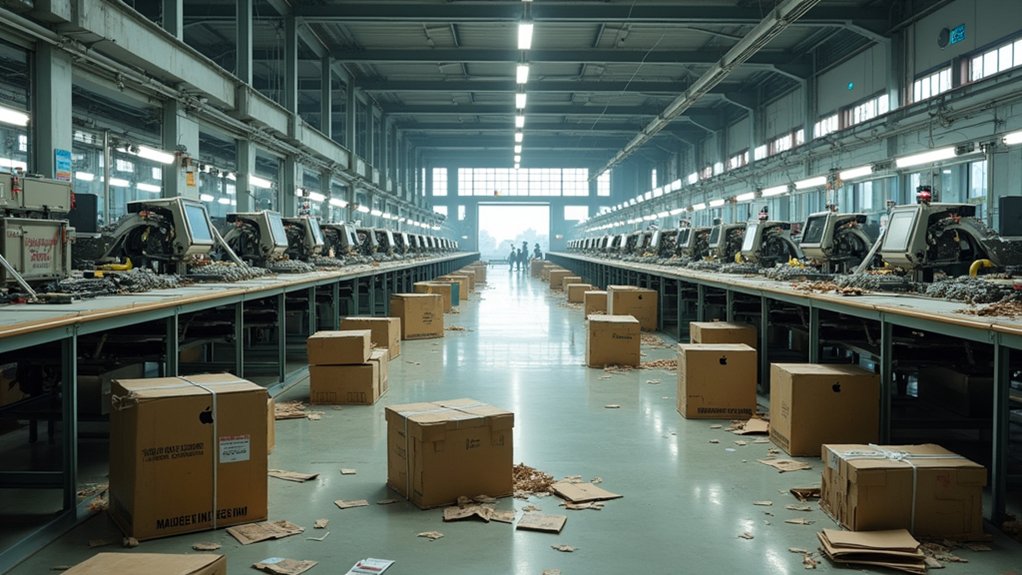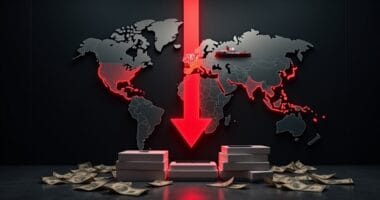Apple’s grand plan to shift iPhone production to India isn’t exactly smooth sailing. The change faces major hurdles: heavy reliance on Chinese components, complex logistics, and potential market disruptions. Moving just 10% of production could take eight years, while tariffs and geopolitical tensions add extra headaches. Despite India’s $2.7 billion in incentives, Apple’s $700 billion market value drop in 2024 signals deeper challenges. The full story behind this manufacturing migration reveals some uncomfortable truths.

Apple is racing to shift iPhone assembly to India, but untangling its massive Chinese supply chain isn’t exactly a walk in the park. Despite plans to source up to 60 million iPhones annually from Indian facilities by 2026, the tech giant faces a sobering reality: moving just 10% of production out of China could take eight years. Talk about a slow boat to India.
The mounting pressure is real. With U.S. tariffs on Chinese imports reaching a jaw-dropping 145%, Apple’s market value has already taken a $700 billion hit in 2024. Sure, Indian assembly helps dodge some tariff bullets, but here’s the kicker – most components still come from China. It’s like trying to make pizza without Italian ingredients. You can do it, but it’s not quite the same. The company’s market liquidity could face significant pressure during this transition period, affecting its ability to respond to rapid market changes.
The numbers look impressive on paper. Apple assembled $22 billion worth of iPhones in India last fiscal year, marking a 60% increase. But let’s get real – manufacturing capacity isn’t built overnight. Major suppliers like Foxconn, Tata Electronics, and Pegatron are ramping up operations, but they’re still dependent on Chinese parts. The iPhone 17 development may be exclusively handled in India, marking a significant milestone. It’s a bit like moving houses while keeping all your furniture at the old place.
The geopolitical chess game isn’t helping either. As Apple tries to please everyone, it risks satisfying no one. Chinese consumers might turn their backs if they feel snubbed, while Indian stakeholders could push back if they’re not getting enough of the pie. Meanwhile, U.S. tariffs targeting India could crash the party before it even starts. Universal 10% tariffs from the US still apply to India, complicating the transition further.
India’s government is rolling out the red carpet with juicy incentives, including a $2.7 billion subsidy plan. But throwing money at the problem won’t solve everything. The harsh truth? Full supply chain relocation requires massive investments, years of planning, and a prayer that trade wars don’t get worse.
Right now, Apple’s stuck between a rock and a hard place – or more accurately, between Beijing and New Delhi.





